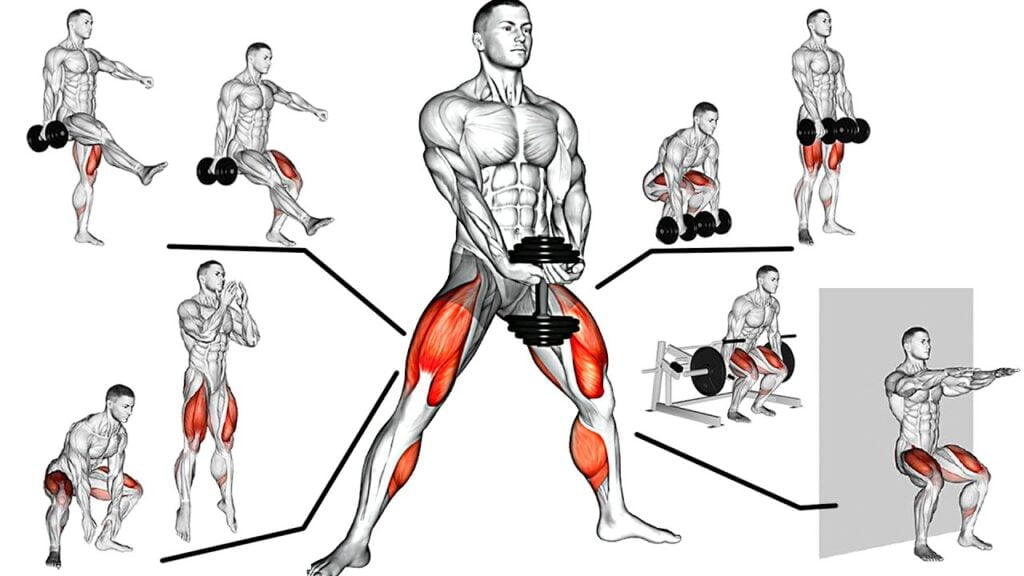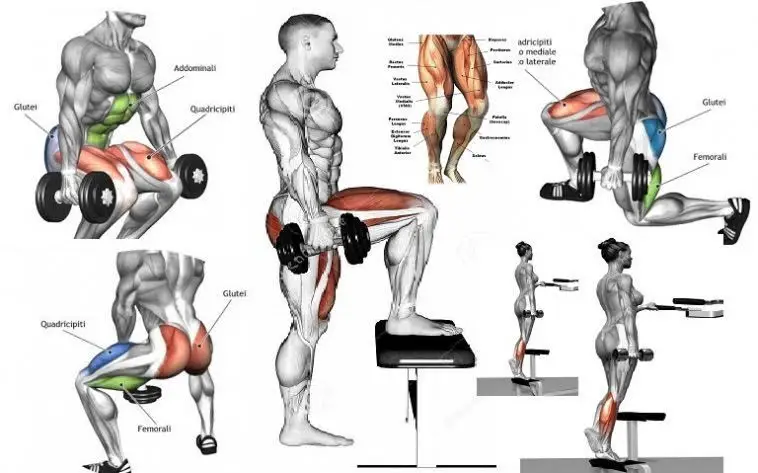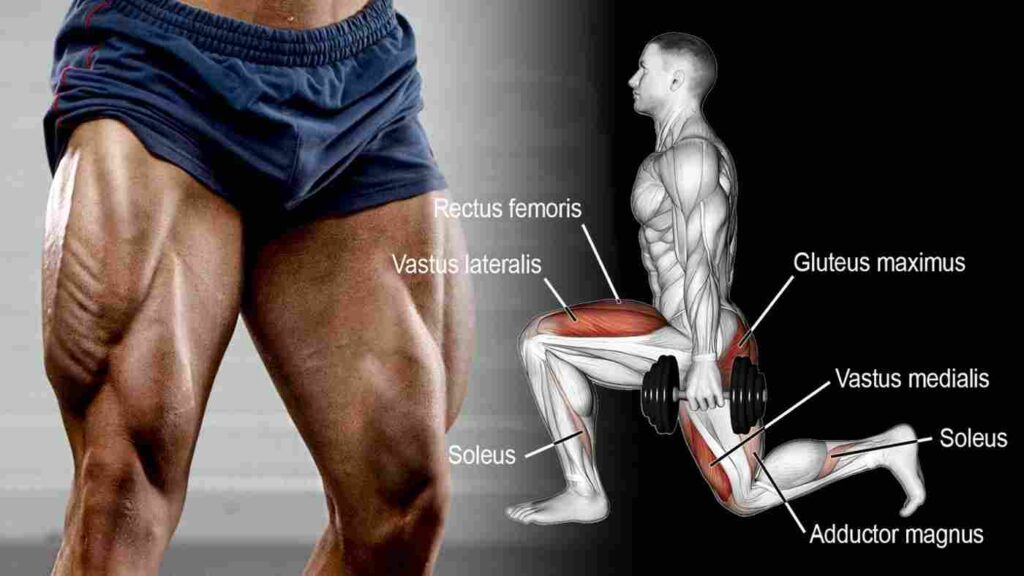Embarking on a fitness journey often comes with its fair share of aches and pains, and sore hamstrings are a common hurdle for many. Whether you’re a seasoned athlete or a weekend warrior, the hamstrings play a crucial role in your mobility and performance. But what happens when these vital muscles are crying out for a break? Can you still hit the gym and power through your workout, or is it time to hit the pause button and give them the rest they need?
In this comprehensive guide, we’ll explore the delicate balance between pushing your limits and listening to your body’s signals. We’ll delve into the anatomy of the hamstring, understand the causes of soreness, and provide practical advice on how to manage discomfort while maintaining your fitness regimen.
Understanding Hamstrings
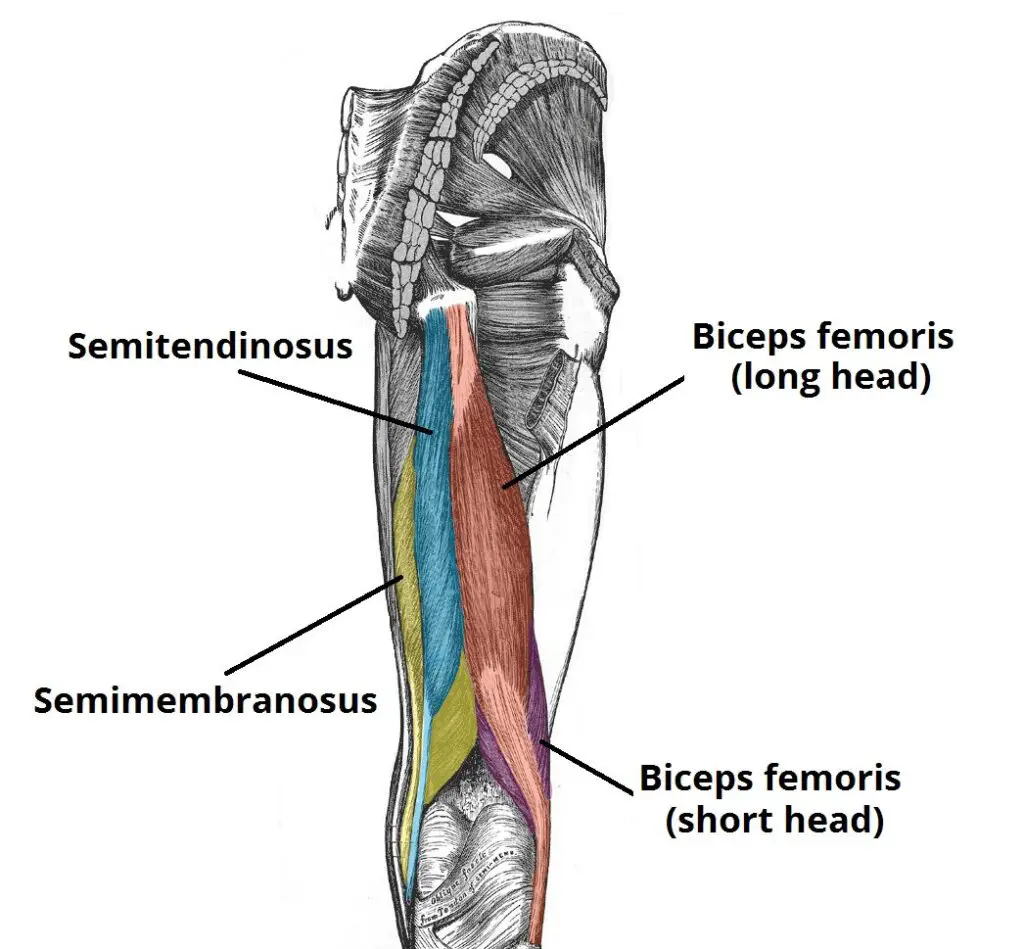
The hamstrings are a group of three muscles located at the back of the thigh. These muscles include the biceps femoris, semitendinosus, and semimembranosus. They play a pivotal role in many daily activities such as walking, running, and jumping. The primary functions of the hamstrings are to flex the knee joint and extend the thigh backward to propel movement.
Anatomy-wise, the hamstring muscles originate from the ischial tuberosity in the pelvis and insert into the bones of the lower leg. The biceps femoris, which has both a long and a short head, is involved in knee flexion and lateral rotation of the knee. The semitendinosus and semimembranosus muscles also contribute to knee flexion and help medially rotate the hip and lower leg.
Understanding the structure and function of the hamstrings is crucial for recognizing how they can become injured and how to properly care for them. Whether it’s through stretching, strengthening exercises, or proper warm-up routines, taking care of your hamstrings is vital for overall leg health and mobility.
Causes of Soreness
When it comes to sore hamstrings, several factors can contribute to the discomfort. Here’s a breakdown of potential causes to include:
- Muscle Overload: The most common cause of hamstring pain is muscle overload, which occurs when the muscle stretches too far or contracts too quickly, especially during activities like sprinting.
- Injury: Hamstring strains are characterized by tears in the muscle fibers and can range from mild to severe. These injuries often happen during high-speed movements such as running, lunging, or jumping.
- Tight Muscles: Athletes with tight muscles are more susceptible to injuries. Tightness can develop from sitting for long periods, which puts the hamstrings in a shortened position, or from participating in sports that require a lot of running or jumping.
- Muscle Imbalances: When certain muscles are stronger than others, it can lead to an imbalance that increases the risk of hamstring strain.
- Poor Conditioning: Weak muscles are less able to cope with the stress of exercise and are more prone to injury.
- Fatigue: Tired muscles do not absorb as much energy, which can lead to strains.
- Age and Growth: Adolescents whose bodies are still growing and older athletes who walk as their primary form of exercise are at higher risk. Muscles and bones don’t necessarily grow at the same rate, leaving them vulnerable to tearing.
- Posture and Back Issues: Tight hamstrings can pull the pelvis backward, increasing pressure on the lower back and contributing to poor posture.
- Previous Injuries: Having had a hamstring injury in the past increases the likelihood of future injuries.
- Mineral Deficiency and Dehydration: These can lead to cramping of the hamstring muscles.
Assessment of Soreness
Assessing the severity of hamstring soreness and determining when it’s safe to exercise involves a few steps:
- Symptom Discussion: A healthcare provider will typically start by discussing your symptoms, overall health, and how the injury occurred.
- Physical Examination: During a physical exam, tenderness, bruising, pain, and weakness in the hamstrings are checked, especially when the muscle group is contracted against resistance.
- Pain Scale: Use a pain scale from 1 to 10 to help quantify the soreness. Mild discomfort might be a 1 or 2, while pain that affects daily activities might be higher up on the scale.
- Range of Motion Tests: Tests like the straight leg raise or resisted knee flexion can help assess the extent of the injury.
- Imaging: In more severe cases, imaging tests such as X-rays, ultrasounds, or MRIs may be used to check for avulsion fractures or to show tears in the muscles and tendons.
Why Aren’t My Biceps Getting Bigger?
It’s generally safe to exercise with mild soreness, but if you experience pain that worsens with activity, it’s advisable to rest and seek medical advice. For more severe injuries, a healthcare provider will guide you on when it’s safe to return to full activity, which often involves avoiding sports for at least a few weeks.
Benefits of Stretching
Here we are discussing some key advantages of stretching:
- Pain Relief: Stretching can alleviate back pain and reduce discomfort in the lower back, knees, and legs.
- Improved Posture: Regular hamstring stretches can help correct posture by aligning the pelvis and reducing the strain on the lower back.
- Injury Prevention: Flexible hamstrings are less prone to strains and muscle tears, particularly in activities involving running or sprinting.
- Enhanced Flexibility: Stretching increases the flexibility of the hamstring muscles, which can improve hip and knee range of motion.
- Better Circulation: Proper stretching can enhance blood flow, which aids in muscle recovery and reduces soreness.
- Increased Range of Motion: Loosening tight hamstrings can lead to a better range of motion, allowing for more fluid movement during exercise and daily activities.
- Reduced Muscle Tightness: Regular stretching can ease muscle tension and stiffness, making you feel more relaxed and comfortable.
- Performance Improvement: Athletes may find that stretching their hamstrings leads to better performance due to the muscles being more prepared for activity.
- Ease of Movement: Improved hamstring flexibility means everyday activities like climbing stairs, lifting, or bending over become easier.
Recommended Exercises
When dealing with sore hamstrings, it’s important to engage in exercises that promote healing and avoid those that could exacerbate the condition. Here’s a list of exercises tailored for each scenario:
Safe Exercises for Sore Hamstrings:
Lying Hamstring Stretch: Start by lying flat on your back on a comfortable surface. Extend one leg upwards and gently pull it towards your chest, holding it either behind the thigh or the calf, but not directly on the knee joint. Keep the stretch gentle and avoid any pain. Hold the position for 15-30 seconds, feeling a mild to moderate stretch in the hamstring, then slowly release and switch legs.

Kettlebell Swings: Stand with your feet slightly wider than hip-width apart, toes pointed slightly outwards. Place a kettlebell in front of you. Hinge at the hips and bend your knees slightly to grasp the kettlebell handle with both hands. Keep your back flat and shoulders pulled back. Swing the kettlebell back between your legs and then thrust your hips forward, swinging the kettlebell up to chest height. Let the momentum swing the kettlebell back between your legs and repeat the movement.
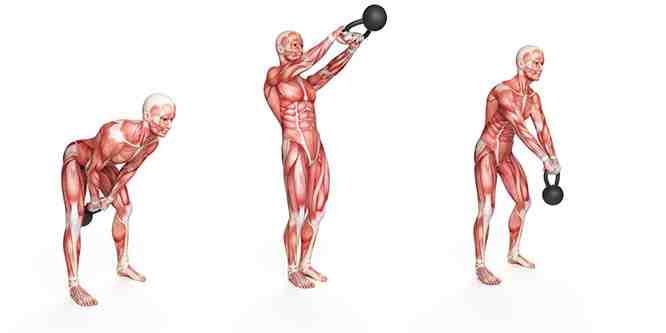
Single-Arm/Single-Leg Romanian Deadlifts: Hold a weight in one hand and stand on the opposite leg. Keep a slight bend in the standing knee. Hinge at the hips, extending the free leg behind you for balance as you lower the weight towards the ground. Keep your back straight and core engaged. Return to the starting position by driving through the standing heel, extending your hips, and bringing the weight back up.

Prone Leg Curl: Lie face down on a leg curl machine with the pad of the lever on the back of your legs, just below the calf muscles. Securely grasp the machine’s handles. Curl your legs up as far as possible without lifting your upper legs from the pad. Once you reach the fully contracted position, hold it briefly, then slowly lower the weight back to the starting position.
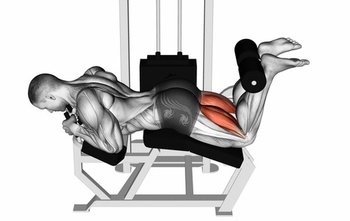
Pelvic Tilts and Bridges: Lie on your back with knees bent and feet flat on the floor, hip-width apart. Flatten your lower back against the floor by slightly tilting your pelvis upward. Hold this tilt for a few seconds, then release. For the bridge, push through your heels to lift your hips off the floor, creating a straight line from your knees to shoulders. Hold the bridge position for a few seconds before slowly lowering your hips back to the floor.

Exercises to Avoid with Sore Hamstrings:
- Running and Sprinting: High-speed movements can strain the hamstrings further.
- Jumping Hurdles: The explosive nature of this activity can aggravate hamstring pain.
- Squats and Lunges: These exercises can put excessive stress on the hamstrings if they’re already sore.
It’s crucial to listen to your body and avoid pushing through pain. If an exercise causes discomfort, it’s best to stop and consult with a healthcare professional.
Warm-Up and Cool-Down Techniques
Warm-up and cool-down routines are critical components of any exercise regimen, especially when it comes to preventing and alleviating hamstring soreness. Here’s a guide on effective techniques for both:
Warm-Up Techniques:
- Dynamic Stretching: Engage in active movements that stretch the muscles you’ll be using during your workout. Examples include leg swings, arm circles, and lunges.
- Light Cardio: Start with 5-10 minutes of light jogging, cycling, or brisk walking to gradually increase your heart rate.
- Sport-Specific Drills: If you’re preparing for a specific sport, include drills that mimic the movements you’ll be performing.
Cool-Down Techniques:
- Gradual Decrease in Intensity: Slow down the pace of your activity gradually instead of stopping abruptly.
- Static Stretching: After exercising, hold stretches for 20-30 seconds to relax your muscles and improve flexibility.
- Foam Rolling: Use a foam roller to massage and release tension in your muscles.
Examples of Cool-Down Exercises:
- Light Jogging or Walking: Spend 3-5 minutes doing light jogging followed by 3-5 minutes of brisk or easy walking.
- Upper Body Stretch: Interlace your fingers and press your palms up toward the ceiling, stretching your hands up and back.
- Seated Forward Bend: Sit with your legs extended and hinge at your hips to fold forward, placing your hands on your legs or the floor.
Remember, the goal of warming up is to increase blood flow and prepare the body for the demands of your workout, while cooling down helps to return the body to a state of rest and begin the recovery process.
Prevention Tips
Preventing hamstring soreness is key to maintaining a healthy and active lifestyle. Here are some tips to help you avoid this common issue:
- Warm-Up Properly: Engage in dynamic stretches and light cardio to prepare your muscles for exercise.
- Strengthening: Incorporate exercises that strengthen the hamstrings, glutes, and core to support the muscles and prevent overuse.
- Regular Stretching: Include hamstring stretches in your daily routine to maintain flexibility and reduce tightness.
- Proper Technique: Ensure you’re using the correct form during exercises to avoid putting unnecessary strain on your hamstrings.
- Gradual Progression: Increase the intensity and duration of your workouts gradually to avoid overloading the muscles.
- Adequate Rest: Allow time for your muscles to recover between intense workouts to prevent overuse injuries.
- Hydration and Nutrition: Stay hydrated and maintain a balanced diet to support muscle function and recovery.
- Listen to Your Body: Pay attention to signs of fatigue and soreness, and rest as needed to prevent injury.
By following these tips, you can help keep your hamstrings healthy and reduce the risk of soreness and injury.
FAQs
Q 1. Can stretching worsen sore hamstrings?
Ans. While stretching is generally beneficial, overstretching or stretching improperly can exacerbate hamstring soreness. It’s important to stretch gently and within a comfortable range of motion.
Q 2. How can I differentiate between soreness and a hamstring injury?
Ans. Soreness typically subsides within a few days and is felt as a dull, aching sensation. An injury, on the other hand, may present sharp pain, swelling, or bruising, and the discomfort persists or worsens with activity.
Q 3. Is it better to apply heat or ice to sore hamstrings?
Ans. Ice is recommended for the first 48-72 hours after the onset of soreness to reduce inflammation. After this period, heat can be applied to promote blood flow and aid in the healing process.
Q 4. What role does nutrition play in recovery from hamstring soreness?
Ans. Proper nutrition, including adequate protein intake and essential vitamins and minerals, supports muscle repair and recovery. Staying hydrated is also crucial.
Q 5. How long should I wait before returning to my regular workout routine?
Ans. The time needed to return to regular workouts varies depending on the severity of the soreness. It’s essential to listen to your body and return gradually as the soreness subsides.
Q 6. Can foam rolling help with sore hamstrings?
Ans. Yes, foam rolling can help alleviate soreness by increasing blood flow and breaking up muscle tightness. However, it should be done carefully to avoid further irritation.
Q 7. Are there any specific yoga poses that are beneficial for sore hamstrings?
Ans. Gentle yoga poses like Downward Dog, Standing Forward Bend, and Reclining Hand-to-Big-Toe Pose can help stretch and strengthen the hamstrings.
Q 8. Should I avoid cardio workouts if my hamstrings are sore?
Ans. Low-impact cardio activities like swimming or cycling can be beneficial as they increase blood flow without putting excessive strain on the hamstrings.
Conclusion
And there we have it, friends – a journey through the ups and downs of working out with sore hamstrings. We’ve covered a lot of ground together, from understanding the nitty-gritty of our trusty hamstrings to figuring out how to treat them right when they’re feeling under the weather.
We’ve learned that while it’s tempting to ‘walk it off’ and push through the pain, sometimes the bravest thing you can do is take a step back, listen to your body, and give it the care it deserves. It’s all about finding that sweet spot between challenging ourselves and nurturing our well-being.
So, whether you’re lacing up your sneakers for a run or settling in for a cozy movie night, remember to keep those hamstrings happy. Stretch them, strengthen them, and most importantly, respect them. They’re not just the unsung heroes of our daily hustle – they’re the silent powerhouses that carry us through every leap, sprint, and dance move.r

Good day, and welcome to Fitthour. My name is Shubham Vijay, and I am a certified personal trainer and nutrition coach with 6 years of experience in the fitness industry. At Fitthour, we specialize in types of training, such as strength training, cardio, or HIIT, and our mission is to help clients achieve their fitness goals and improve their overall health.

